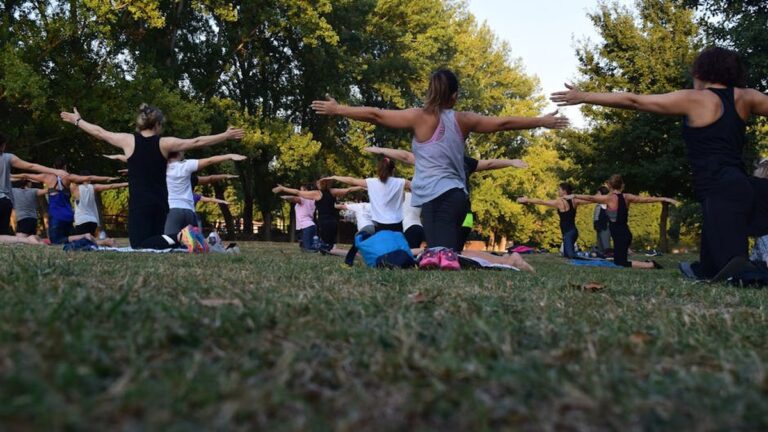Fall Foliage Fitness: Hiking & Trail Running Safety Tips for Changing Conditions
The crisp air, the vibrant colors, the crunch of leaves underfoot – there’s no better time to hit the trails than during fall. But the beauty of autumn also comes with unique challenges for hikers and trail runners. Changing weather, shorter daylight hours, and slippery conditions require extra caution. This guide provides essential safety tips for enjoying fall hiking and fall trail running safety, ensuring a safe and exhilarating experience.
Understanding the Unique Challenges of Autumn Hiking
Autumn presents a different set of obstacles compared to summer hikes. Being aware of these challenges is the first step to staying safe.
Unpredictable Weather Patterns
Fall weather is notoriously fickle. You might start your hike in sunshine and end in a chilly rain. Be prepared for rapid temperature drops, sudden showers, and even early snowfall, especially at higher elevations. According to the National Weather Service, hypothermia is a significant risk even in temperatures above freezing, especially when combined with rain or wind. This makes proper layering and waterproof gear crucial.
Shorter Daylight Hours
The days are getting shorter, meaning less time to complete your hike. What might be a leisurely afternoon hike in July can quickly turn into a race against the setting sun in October. Always check the sunset time before you go and plan your route accordingly. Bring a headlamp or flashlight with extra batteries, even if you don’t expect to be out after dark.
Slippery Trail Conditions
Wet leaves, mud, and early frost can make trails incredibly slippery. Fallen leaves can also obscure trail markers and hazards like rocks and roots. Choose trails appropriate for your skill level and wear shoes with good traction. A Hiking pole or trekking poles can provide added stability.
Essential Gear for Safe Autumn Adventures
Having the right gear can make all the difference in your safety and comfort. Here’s a checklist of essential items for hiking in autumn:
- Layers: Start with a moisture-wicking base layer, add an insulating mid-layer (like fleece or down), and finish with a waterproof and windproof outer shell.
- Waterproof Hiking Boots or Trail Shoes: Choose footwear with good ankle support and aggressive tread for traction.
- Waterproof Backpack: Protect your gear from rain and snow.
- Headlamp or Flashlight: With extra batteries!
- Navigation Tools: Map, compass, and GPS device (and know how to use them!). Consider downloading offline maps on your phone.
- First-Aid Kit: Include essentials like bandages, antiseptic wipes, pain relievers, and blister treatment.
- Emergency Shelter: A lightweight bivy sack or emergency blanket can provide crucial warmth in unexpected situations.
- Food and Water: Pack plenty of high-energy snacks and water. Dehydration can worsen the effects of cold weather.
- Sunscreen and Sunglasses: Even on cloudy days, the sun can be strong, especially at higher elevations.
- Whistle: For signaling in case of an emergency.
Fall Foliage Fitness: Training and Preparation
Don’t underestimate the physical demands of fall hiking and trail Running tips fall. Proper training and preparation are vital.
Assess Your Fitness Level
Be honest about your current fitness level. Start with shorter, easier hikes and gradually increase the distance and difficulty as you get stronger. If you’re new to hiking or trail running, consult with a doctor before starting a new exercise program.
Train Specifically for Hiking or Trail Running
Incorporate exercises that strengthen your legs, core, and cardiovascular system. Include activities like:
- Hiking or running on varied terrain.
- Strength training (squats, lunges, calf raises).
- Cardiovascular exercise (running, cycling, swimming).
Practice with Your Gear
Don’t wait until you’re on the trail to discover that your new hiking boots give you blisters or that your backpack doesn’t fit properly. Break in your boots and practice using your gear before your hike.
Staying Safe on the Trail: Practical Tips for Autumn
Once you’re on the trail, follow these tips to ensure a safe and enjoyable experience.
Check the Weather Forecast
Monitor the weather forecast closely before you go and be prepared for changing conditions. Be aware of potential hazards like rain, wind, and snow.
Tell Someone Your Plans
Let someone know where you’re going, what route you’re taking, and when you expect to be back. This is crucial in case of an emergency.
Stay on Marked Trails
Avoid shortcuts and stick to established trails. Fallen leaves can obscure trail markers, so pay close attention. If you’re unsure of the route, consult a map and compass or GPS device.
Pace Yourself
Don’t push yourself too hard, especially at the beginning of your hike. Take frequent breaks to rest and hydrate.
Be Aware of Your Surroundings
Pay attention to your surroundings and be aware of potential hazards like slippery rocks, fallen trees, and wildlife. Make noise to avoid surprising animals.
Know How to Treat Hypothermia
Hypothermia is a serious risk in cold weather. Learn the symptoms (shivering, confusion, slurred speech) and how to treat it (get the person warm and dry). According to the CDC, even mild hypothermia can impair judgment and coordination, increasing the risk of accidents.
Practice Leave No Trace Principles
Pack out everything you pack in, stay on the trail, and minimize your impact on the environment. Respect wildlife and other hikers. Autumn hiking safety includes protecting the natural beauty we enjoy.
Case Study: Learning from Mistakes
Consider the case of a group of experienced hikers in the White Mountains of New Hampshire. They underestimated the potential for severe weather in October. A sudden snowstorm caught them off guard, and they were forced to spend a cold, uncomfortable night on the trail. While they ultimately made it out safely, the experience highlighted the importance of being prepared for the worst-case scenario, even for experienced hikers.
Enjoying the Beauty of Autumn Hiking
With proper planning, preparation, and awareness, you can safely enjoy the stunning beauty of autumn hiking and autumn hiking safety. Remember to respect the environment, be mindful of the changing conditions, and prioritize your safety. By following these tips, you can make the most of this spectacular season and create lasting memories on the trail. Remember to stay safe and enjoy the vibrant colors of fall!
References
-
Harvard – Harvard Staying Active Guide
– Research-based physical activity recommendations. -
CDC – CDC Physical Activity
– Government physical activity guidelines for all ages. -
AHA – American Heart Association Fitness
– Cardiovascular health and exercise recommendations.






